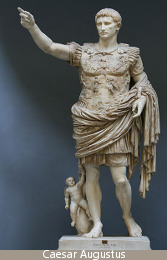Was Jesus Crucified with Nails?
Body
“The Bible doesn’t say Jesus was nailed to a cross. Telling the story of Christ’s death, Matthew, Mark, Luke, and John simply say that Roman soldiers crucified him. They don’t say how.” - CToday
As iron sharpens iron,
one person sharpens another. (Proverbs 27:17)
“The Bible doesn’t say Jesus was nailed to a cross. Telling the story of Christ’s death, Matthew, Mark, Luke, and John simply say that Roman soldiers crucified him. They don’t say how.” - CToday
“…in the Mishnaic passage prescribing food for a woman separated from her husband, ‘wine was not included in the minimum diet … The Tosefta reports that a woman “has no claim for wine, for the wives of the poor do not drink wine.”’ Accordingly, wine seems to have been a more common drink among the wealthy.” - Biblical Archaeology Society
“The general norm in the first century seems to be that churches were led by multiple elders/overseers/pastors. Some see this plurality as a command. I’m not sure it quite rises to that level.” - DBTS Blog
“Many other Roman-era techniques would have separated Roman wine in the time of Jesus from what we drink today, including natural fermentation. Additionally, while Roman wine could come in a wide range of colors, the Roman world lacked the modern distinction between red and white wines” - Biblical Archaeology
“Understanding his context reveals the Apostle Paul as one of the great letter writers of his age.” - Text & Canon
“From ancient Israelite DNA to a moat around Jerusalem, these are the discoveries that made scholars of the biblical world say ‘wow’ this year.” - CToday
“What’s more is that Jesus probably didn’t wear bright colors or a brilliantly white robe. Bright colors were expensive to make, and bleached white clothing was a mark of politicians. Common people usually wore earth tones, reflective of the natural color of the sheep’s wool used to create the garments.” - Kainos Project
From Faith Pulpit, Winter 2015. Used by permission.
A former graduate professor of mine made a passing statement once that grabbed my attention. He referred to two types of worship: the temple model and the synagogue model. The temple emphasized ritual and the synagogue emphasized the Word. In this companion article I want to focus on three physical aspects of the synagogue that relate to the Word of God— the ark, the platform, and Moses’ Seat.
The pictures below help illustrate these three physical features. The first image shows two arks, or special containers for the scrolls of Scripture, at the Western Wall in Jerusalem today. On Mondays and Thursdays young men have their bar mitzvah celebrations at the Western Wall. These arks are here in preparation for their reading from the scrolls at this turning point in their lives.
 Read Part 1
Read Part 1
There were two political choices facing the Jewish person in Judea under Roman rule—submit or rebel. Those choices were personified by two groups or sects that were active during the period—the Herodians and the Zealots. This is not to say that every Jew belonged to one or the other of these “fraternities.” They each actually had very few “members” as such. But the Herodians and the Zealots exemplified the extreme ways in which conquered peoples have always reacted to foreign rulers. Who were these Jewish sectaries and how did they themselves respond to Jesus’ unique message of salvation?
The Herodians are mentioned only twice in the Gospels, once in Galilee (Mark 3:6) and once in Jerusalem (Mark 12:13, Matthew 22:16). In each of these occurrences they are associated with the Pharisees in their opposition to Jesus. While they may have agreed with the Pharisees in their religious views, they must have been distinguished from them in their political beliefs. The Pharisees tended to be rather non-political, more concerned about the Mosaic and Oral law and its application to their daily lives. On the other hand, the Herodians, by their very name, must have been active supporters of Roman rule. The Emperor Augustus was wise enough to know that a subject people could be kept under control better if they were ruled immediately by a “puppet ruler” from the people themselves. Therefore, he appointed Herod who was of nominal Jewish background as a descendant of forced converts to the Jewish faith. Herod, his sons, and their sons ruled over the Jewish people for over a century. This rule, however, was exercised by the permission and blessing of Rome. The Herodian dynasty represented Roman rule to the people. Those who actively supported Roman domination of Judea manifested that support by devotion to Rome’s puppets, the Herods. Hence they were known as Herodians.
Discussion